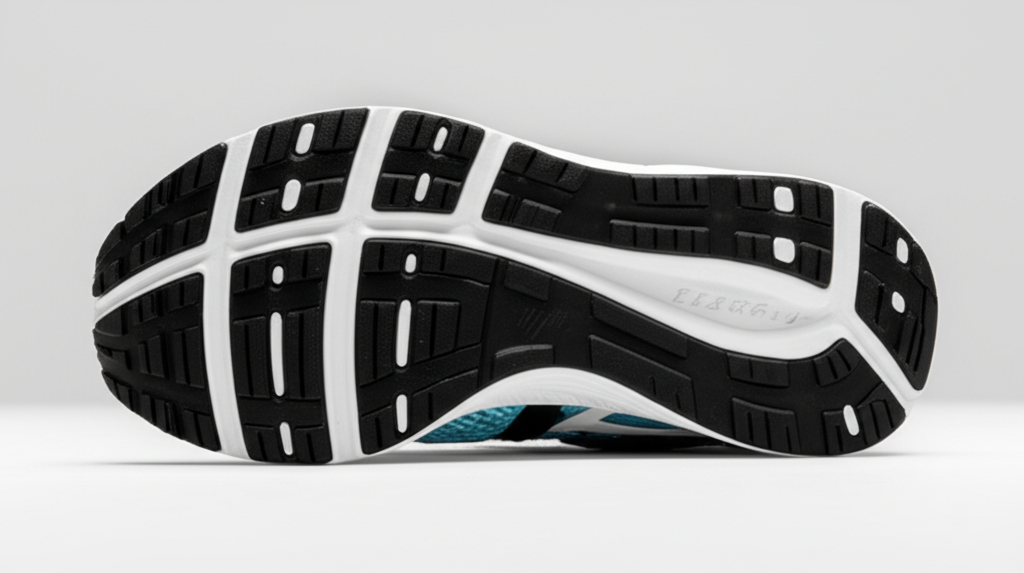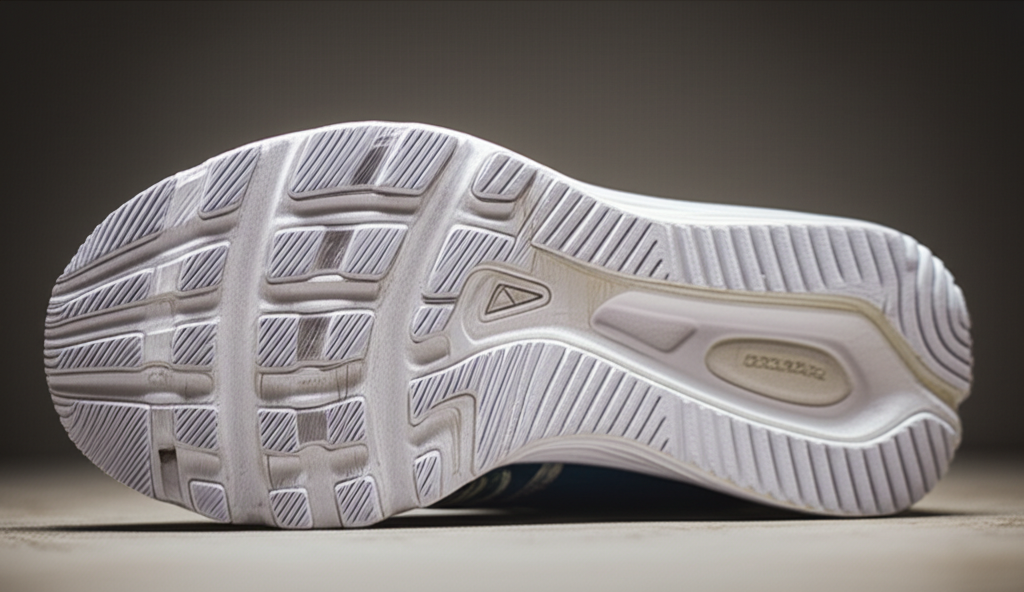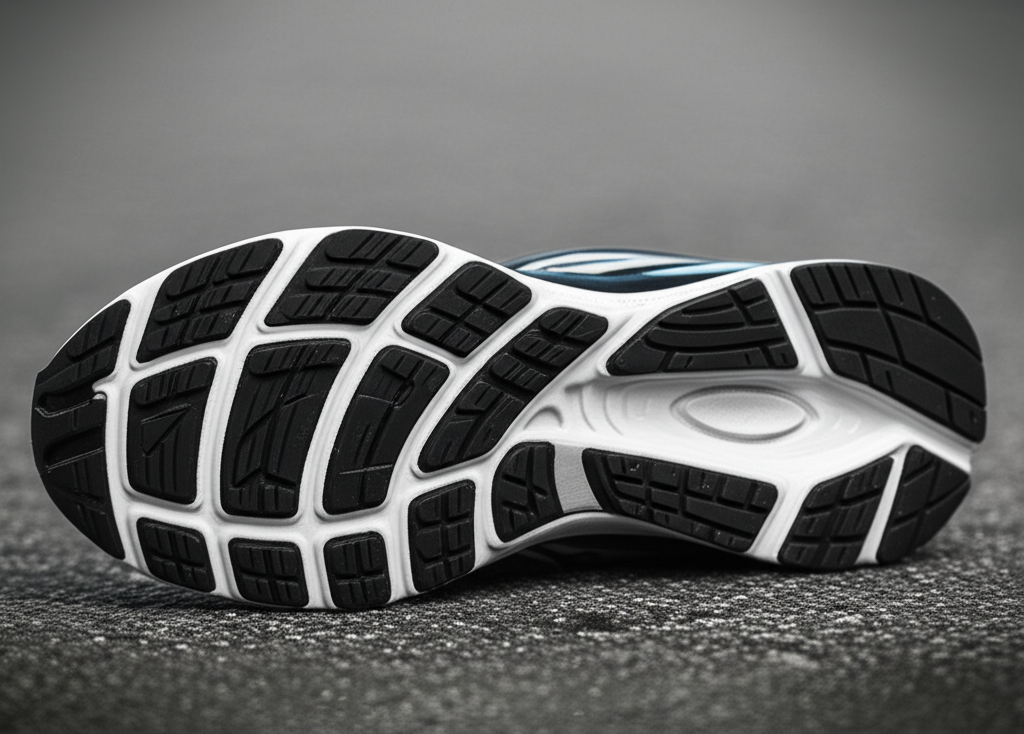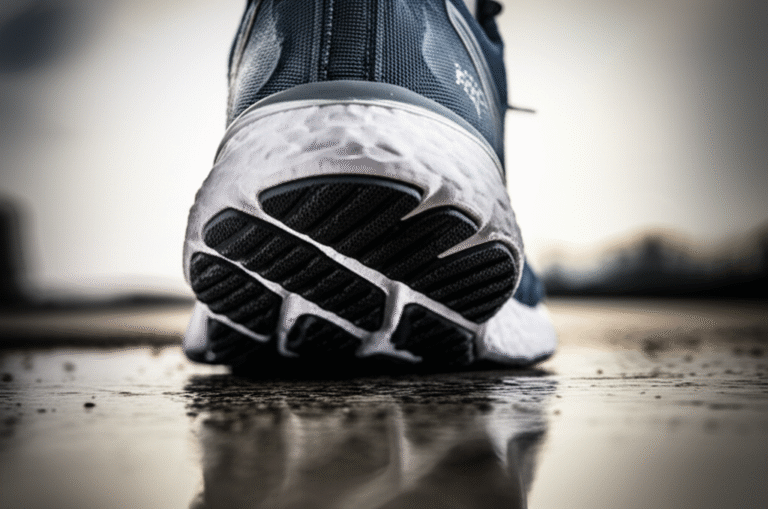Are running shoes non-slip? The shocking truth is that while many running shoes offer good traction, they aren’t inherently “non-slip” like specialized industrial footwear. Their design prioritizes cushioning and energy return for performance, not absolute slip prevention on all surfaces. Understanding this difference is key to staying safe.
Key Takeaways
- Running shoes offer good traction, not true non-slip.
- Sole design dictates slip resistance.
- Wet surfaces challenge running shoe grip.
- Choose specific shoes for slippery conditions.
- Proper maintenance extends traction.
- Safety first: know your shoe’s limits.
Are Running Shoes Non Slip? The Shocking Truth for Beginners
You’ve probably wondered, as you lace up your favorite pair of running shoes, if they’ll keep you grounded, especially when you’re hitting your stride. It’s a common question, especially for those new to running or even just looking for versatile athletic shoes. The idea of a shoe being truly “non-slip” sounds incredibly reassuring. However, the reality is a bit more nuanced. Many people assume that because running shoes are designed for performance and stability, they must also be inherently slip-proof. This isn’t always the case, and understanding why can help you make safer choices. Let’s dive into what makes running shoes grip the ground and when you might need something more.
Understanding Traction in Running Shoes
When we talk about shoes, “traction” and “non-slip” can sound like the same thing, but they’re not. Traction refers to the grip a shoe has on a surface. Non-slip, on the other hand, usually describes footwear specifically engineered to prevent slips and falls, often in hazardous environments like kitchens or construction sites. Running shoes aim for a balance of grip, cushioning, and responsiveness. Their soles are designed to provide enough traction for running on various common surfaces like asphalt, dirt trails, and treadmills, but they aren’t typically tested or certified to meet the stringent standards of true non-slip footwear.
The Science Behind Running Shoe Soles
The outsole, the very bottom part of your running shoe, is where the magic of traction happens. It’s made of rubber compounds and features specific patterns, or lugs, designed to interact with the ground. The type of rubber and the tread pattern play a huge role in how well a shoe grips.
Rubber Compounds and Grip
Different rubber compounds offer varying levels of grip and durability. Softer rubbers tend to provide better initial grip, especially on dry surfaces, but they wear down faster. Harder rubbers are more durable but might offer less immediate traction. Many running shoes use a blend of rubber compounds to achieve a balance between grip and longevity. For instance, brands might use a sticky rubber in high-wear areas for better grip and a more durable rubber elsewhere.
Tread Patterns: More Than Just Looks
The lugs and grooves on the outsole are crucial. Deep, aggressive lugs, often seen on trail running shoes, are designed to dig into softer surfaces like mud and gravel, providing excellent grip in off-road conditions. Road running shoes typically have flatter, more widespread tread patterns with shallower grooves. These are optimized for smooth, hard surfaces and aim to provide consistent contact and grip without being too aggressive, which could hinder a smooth stride.
The spacing of these lugs also matters. Wider spacing helps shed mud and debris, preventing the sole from becoming caked and losing its grip. Closer spacing can offer more surface area contact for consistent grip on hard, dry surfaces.
When Are Running Shoes NOT Non-Slip?

While your running shoes might feel secure on a dry pavement, there are several situations where their traction can be significantly compromised, leading to a higher risk of slipping. It’s important to be aware of these limitations to ensure your safety.
Wet Surfaces: The Biggest Challenge
Water acts as a lubricant between the shoe and the ground. Even with excellent tread, a thin film of water can drastically reduce the friction your running shoes can generate. This is particularly true for smooth, non-porous surfaces like polished concrete, tile, or wet asphalt. The rubber compounds and tread patterns that work well on dry surfaces may not be designed to channel water away effectively. This is where the “shocking truth” often hits home – your beloved running shoes might let you down when you least expect it.
Oily or Greasy Conditions
Similar to water, oil and grease create a slippery film that prevents the rubber sole from making direct contact with the ground. Most running shoes offer very little protection against these substances. If you’re running in an area where spills are possible, such as near a busy road or in an industrial setting, your running shoes are likely not the best choice for grip.
Icy or Snowy Terrain
While some trail running shoes have deeper lugs that might offer a slight advantage on packed snow compared to a slick-soled casual shoe, they are absolutely not designed for icy conditions. Ice is incredibly slippery, and the rubber compounds in running shoes often become stiff and less grippy in cold temperatures. For running on ice or snow, specialized footwear with metal spikes or advanced tread designs is necessary.
Smooth, Polished Surfaces
Think of the lobby of a modern office building or a freshly waxed gymnasium floor. These smooth, dense surfaces offer very little for the lugs on a running shoe to grip onto. While the sheer amount of rubber in contact might provide some friction, the lack of texture means a much higher chance of slipping, especially if the surface is even slightly damp.
Comparing Running Shoes to Specialized Footwear
To truly understand the limitations of running shoes, it’s helpful to compare them to footwear designed with slip resistance as a primary feature. This comparison highlights the different priorities in shoe design.
Industrial Non-Slip Shoes
These shoes are engineered for safety in demanding environments. They often feature:
- Specialized Rubber Compounds: Formulated to maximize grip on wet, oily, or greasy surfaces. These compounds often have micro-textures that create more points of contact.
- Unique Tread Patterns: Designed with channels to quickly evacuate liquids and debris, ensuring the sole stays in contact with the surface.
- Rigorous Testing: Certified to meet specific slip-resistance standards (e.g., through the ASTM F1677 standard for slip resistance).
Trail Running Shoes vs. Road Running Shoes
Even within running shoes, there’s variation in grip.
| Feature | Road Running Shoes | Trail Running Shoes |
|---|---|---|
| Outsole Design | Flatter, more continuous tread; shallow grooves. | Deeper, more aggressive lugs; wider spacing. |
| Primary Surface | Asphalt, concrete, treadmills. | Dirt, mud, rocks, roots, uneven terrain. |
| Grip Priority | Smooth, consistent contact; responsiveness. | Digging into softer surfaces; stability on uneven ground. |
| Wet Surface Performance | Moderate; can be compromised on smooth wet surfaces. | Better on wet dirt/mud; can still slip on wet rocks or roots. |
As you can see, trail shoes offer better traction in specific off-road conditions, but they aren’t necessarily better on smooth, wet surfaces than a well-designed road shoe. Neither type is a true “non-slip” shoe.
How to Maximize Traction with Your Running Shoes
Even though running shoes aren’t non-slip, you can take steps to ensure you get the best possible grip from them and stay safe.
1. Choose the Right Shoe for Your Terrain
This is the most crucial step. If you primarily run on roads, a good road running shoe will offer the best grip for that environment. If you venture onto trails, invest in a dedicated trail running shoe. Using the wrong type of shoe for your typical running surface is a recipe for reduced traction and potential slips.
2. Keep Your Soles Clean
Mud, dirt, pebbles, and even accumulated dust can clog the tread patterns of your running shoes, reducing their ability to grip the ground. After runs, especially on trails, clean your outsoles. A stiff brush or a quick rinse under water can make a big difference. For road shoes, wiping them down can remove grit that might affect grip.
3. Inspect Soles for Wear and Tear
As you run, the rubber on your outsoles wears down. The lugs become smoother, and the overall tread depth decreases. Worn-out soles significantly reduce traction. If the tread on your running shoes looks flat or smooth, it’s time to consider a new pair. The longevity of running shoes is often around 300-500 miles, but this varies based on the shoe, your gait, and the surfaces you run on.
4. Be Mindful of Shoe Stiffness in Cold
As mentioned, rubber compounds can become less pliable and grippy in very cold temperatures. If you’re running in freezing conditions, be extra cautious. Some brands offer winter-specific running shoes with softer rubber compounds or even built-in traction elements, though these are still not equivalent to industrial non-slip footwear.
5. Consider Aftermarket Traction Devices
For running in icy or snowy conditions, consider using slip-on traction devices that fit over your running shoes. These devices, often featuring metal coils or spikes, provide significantly enhanced grip on slippery surfaces. They are temporary solutions, but they can make winter running much safer.
Pro Tip: Always check the weather forecast and ground conditions before your run. If conditions are exceptionally slick, consider an indoor workout or a different type of exercise altogether.
When to Seek Specialized Footwear

Your running shoes are fantastic for their intended purpose: running. However, if your daily activities or work involve environments where slipping is a constant hazard, you absolutely need footwear designed for that specific purpose. This includes:
- Working in kitchens or restaurants: High risk of grease and liquid spills.
- Healthcare professions: Often involves slick floors and need for reliable grip.
- Construction or industrial sites: Potential for oil, water, and uneven surfaces.
- Areas with frequent ice or snow: Especially if you need to walk or stand for extended periods.
For these situations, look for shoes explicitly labeled as “slip-resistant” or “non-slip” and check for certifications like ASTM F1677. Brands like Shoes For Crews specialize in this type of footwear.
FAQ: Your Running Shoe Grip Questions Answered
Q1: Can I wear my running shoes for everyday walking if I’m worried about slipping?
Generally, yes. Most running shoes provide decent traction for everyday walking on common surfaces like sidewalks and indoors. However, be extra cautious on wet floors, smooth tile, or polished surfaces, as their grip is not guaranteed in those situations.
Q2: Do trail running shoes offer better grip than road running shoes?
Trail running shoes offer better grip on soft, uneven, or muddy terrain due to their deeper, more aggressive lugs. However, on smooth, hard, wet surfaces, a road running shoe with a flatter, more continuous outsole might perform comparably or even better, as the trail lugs can sometimes bridge over water on smooth surfaces.
Q3: How do I know if my running shoe soles are worn out and losing grip?
Visually inspect the bottom of your shoes. If the tread is flattened, smooth, or you can barely see the pattern, the grip is significantly reduced. You might also notice a decrease in your confidence on turns or uneven surfaces.
Q4: Are all running shoe brands equally good at traction?
No, traction varies significantly between brands and even between different models within the same brand. Some brands prioritize sticky rubber compounds for better grip, while others focus more on durability or cushioning. It’s best to research specific models if traction is a major concern for your running environment.
Q5: What’s the difference between “slip-resistant” and “non-slip” shoes?
“Slip-resistant” is the more accurate term for most footwear, including good running shoes, indicating they offer enhanced grip. “Non-slip” often implies a higher level of guaranteed protection, typically found in specialized industrial footwear that has undergone rigorous testing and certification for specific hazardous conditions.
Q6: Can I make my current running shoes more slip-resistant?
For everyday purposes, keeping the soles clean and ensuring they aren’t worn down is the best approach. For very slippery conditions like ice, temporary traction devices that attach over your shoes are the most effective solution. Modifying the soles of running shoes yourself is generally not recommended as it can damage the shoe and compromise its intended performance and support.
Conclusion
So, are running shoes non-slip? The honest answer is that while they offer good traction for their intended use, they are not inherently “non-slip” in the way specialized safety footwear is. Their design prioritizes cushioning, energy return, and grip on common running surfaces like asphalt and dirt. When faced with wet, oily, or icy conditions, their grip can be significantly compromised. Understanding this difference is vital for staying safe. By choosing the right shoes for your terrain, maintaining their soles, and being aware of their limitations, you can confidently hit your stride while minimizing the risk of unexpected slips.


